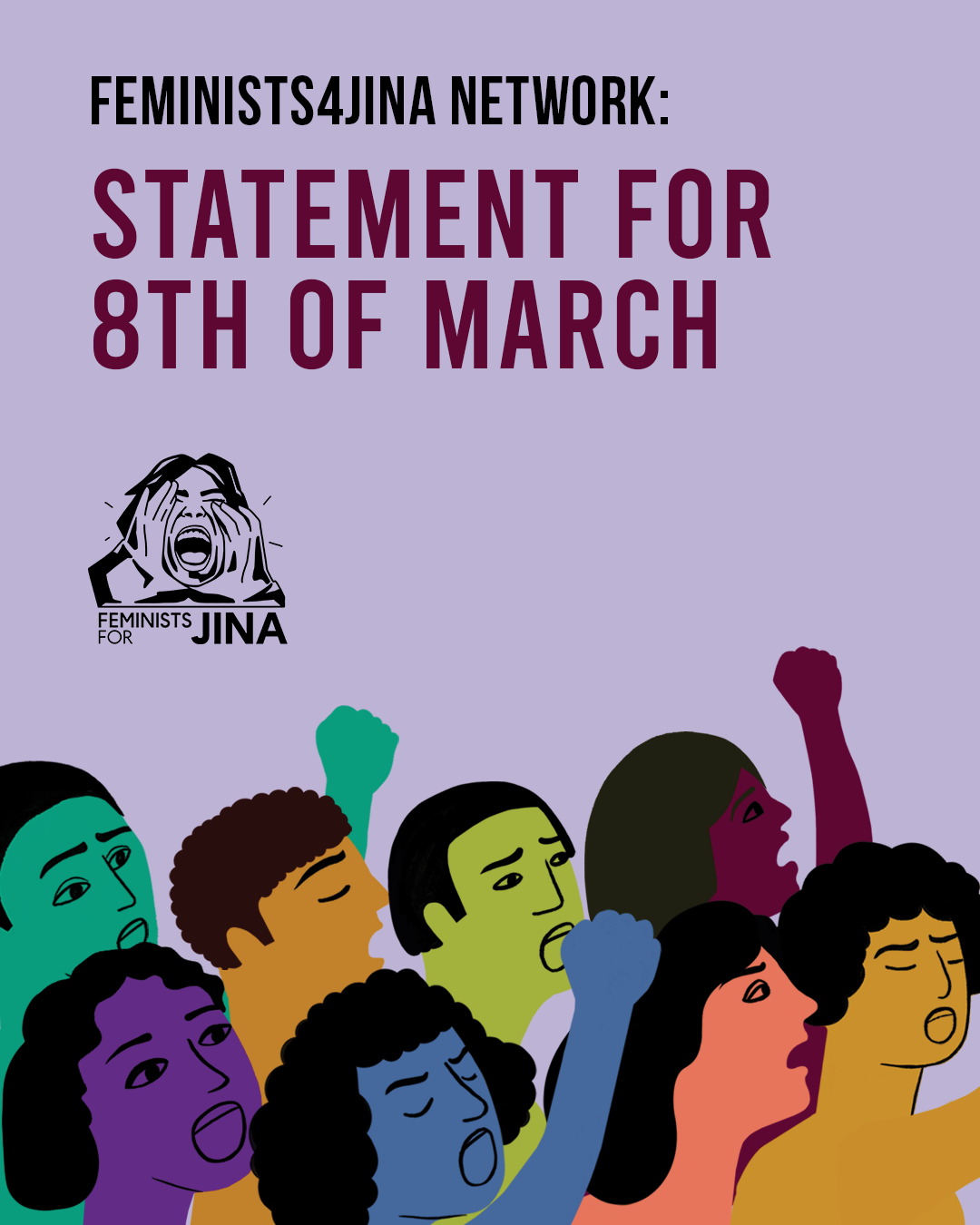Nothing will be reversed any more, because nothing is like it was before, no one is like before. . Neither the streets, nor the people, nor the oppressors nor the regime.
The Jina Revolution is life itself that blooms on the fabric of decay and ruin: an uproar at the intersection of gender discriminations, economic and ethnic discrimination, an irreversible rupture, transformation of the voice of protest for change, to change itself. A change in all multifaceted relations: from political structures to other patriarchal institutionalised and established structures of society, economics, nation and religion. This is about the collapse of the ruling regime’s authority in minds, before their total collapse in reality. Nothing is like it was before, even our image of the revolution. From women and individuals with marginalised gender and sexual identities, to people weary of poverty and deprivation, to marginalised and oppressed nations, all along the way to the environment, these are no longer the voice of a single gender, or a single people, or one marginalised minority or the weak cry of protest against patriarchy and structural religious despotism of Iran; these are the ongoing heartbeat of a daily revolution. A revolution in which the periphery and the marginalised are the centre. A revolution which continues every day and every second in the songs of Nika(s), in the dance of head scarfs and in the dances of Khodanoors.
The struggle does not conform to old forms as well. Albeit being indebted to preceding pervasive feminist struggles, the Jina revolution is a leap over and beyond them: a change on the level of struggles, a transformation in paradigm; this is entering another phase of history where everything is transformed and changed, even ourselves, within the women’s movement of Iran. Women’s struggle in the Iranian geography for obtaining gender equality and against systematic violence and patriarchal, centralised and Shi’ite religious despotism is at least a century old: since the foundation of the constitutional revolution’s constitution which did not take into account men and women’s equality all the way to the 1979 revolution which deprived women of their minimum previous achievements, this far-reaching long history is also the narrative of the diversity of struggles and chained resistance of feminists and women’s movement for raising awareness, for making small changes up to big reforms in structures and foundations in the context of their times. However, the radical and unquestionable connection of the issue of gender with other issues and problems of the society lie at the heart of the Jina revolution. The state murder of Jina, the symbolization of her name, the fact that the slogan “Jin, Jian, Azadi” – which has emerged from Kurdish struggles with its far reaching fights against discrimination – entered the current struggle, and the resonance of this slogan and movement throughout other cities in Iran has effectuated a radical and horizontal blow to the patriarchal and misogynist fabric of the society. A movement from below at the heart of the political state and other patriarchal institutions of power. It is the concrete symbol of the personal-political and the symbol of moving from asserting demands to a collective action for structural change. The active and participatory presence in all relations of power. A dynamic movement which creates various non-linear situations full of permanent re-flections while moving forward. The emancipatory aspects of this revolutionary uprising include the categorical rejection of any form and any kind of despotism, violence, dogmatism and alienation from the other, and underlining emancipation from exploitation, in all political, social, economic and environmental aspects.
Our feminist struggle today is far from what it was yesterday. The level of these struggles, since the Jina Revolution and seen in light of the experience of feminist liberation movements of Kurdistan, has expanded our connections to freedom and justice seeking movements and movements against discrimination. This is an active and interwoven connection for solidarity and union towards forming trans-national and powerful connections against any kind of structural discrimination and violence.
The Jina revolution is ongoing. Since September 2022 until this day, the image of Iran has completely changed. The fists, scarfs waving in the air by girls standing on benches in streets within a masculine context, torn and burnt down authoritarian symbols, graphitised walls which were cleaned afterwards, the permanent weekly resistance of Balouch people, creative neighbourhood-based and situation-based organisations and the connection of imagination to reality, are now part and parcel of the daily memory of streets. A new spirit is being born, despite all lives the tyrants took away and made perish, despite all eyes they blinded, despite all beheadings and executions, despite all wounded and shut bodies, and despite all poisoned breaths. The Jina Revolution is the canon of discussions, debates and organisations. Feminist collectives and networks and alternative forms of organizations have developed and with the publication of various manifestos the imaginatio communis for the perspective of making the future has become possible: a perspective without the Islamic republic and not with an alternative form of the latter.
Feminists for Jina Network is born out of the same processes, as a result of the Jina Revolution and beyond the Iranian geographical boundaries. The Feminists for Jina Network is based on horizontal and bottom to top organisation, it is an exercise in collectively practicing democracy, an endeavour to echo the voice of the Jina Revolution and above all, a feminist intervention towards the expansion of the idea of “woman, life, freedom” which is the implementation and execution of the very feminist politics itself. This in turn means propagating this idea in all levels and in all areas. It means intervention in order to keep this idea at the heart and centre and prevent it from being marginalised or manipulated. Woman, Life, Freedom is the politics of life, both in theory and in method.
During the 1979 demonstrations on the occasion of the International Women’s Day (8th of March), women, with awareness about sexual and gender oppression, transformed the feast of the revolution to a protest, and warned the society about the crushing avalanche which was coming towards them targeting their being. Their outcry, “We did not make a revolution, to make a regression” was suppressed in the noise of the revolution. Today, on the occasion of the first 8th of March since the Jina Revolution, we echo their slogan once again. The shadow of patriarchy and despotism is chasing us permanently, even in the midst of the ongoing Jina Revolution which is a revolution against patriarchal structures and current tyranny. The destiny of every one of us is interwoven into the fabric of the Jina Revolution at this very moment. The permanence and prevalence of this revolution is the outcome of our everyday endeavours for actualizing and realising feminist politics in the process of the revolution, and for Woman, Life, Freedom.
Nothing is like before. Another world is in the making. The future is now.
Find this statement in Arabic, French and German on our Instagram page.

